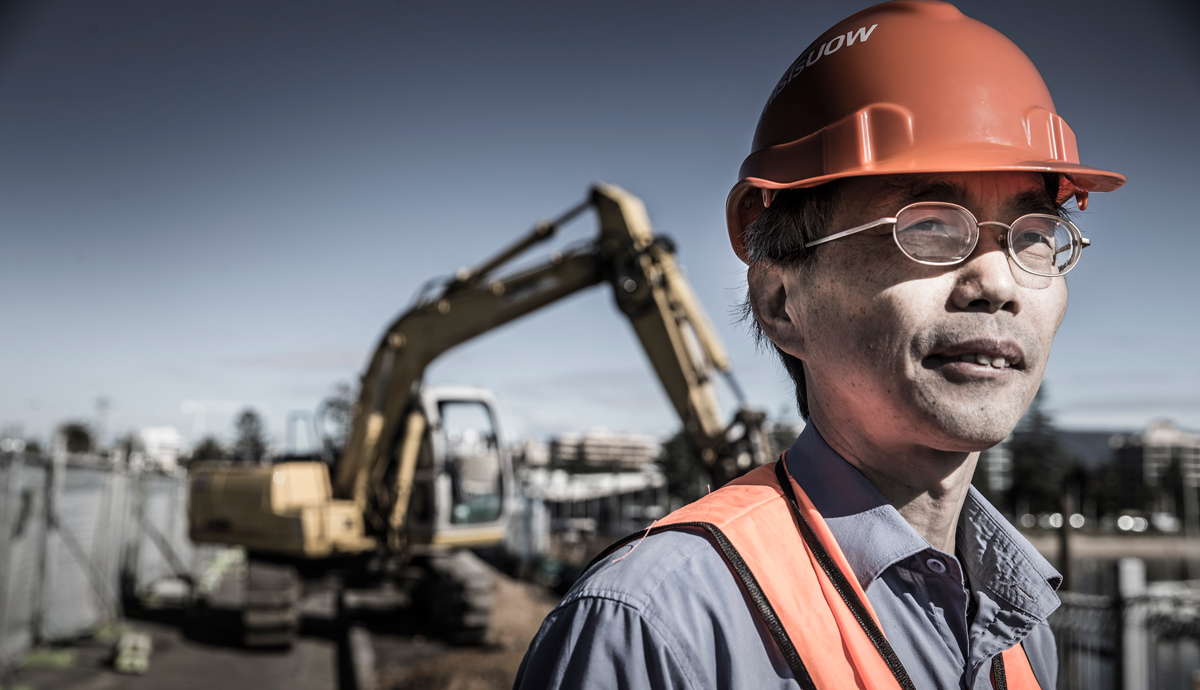June 22, 2015
Mathematical model takes the guesswork out of stronger, cheaper construction
Designs for buildings in earthquake and erosion-prone areas could be as easy as entering numbers into a tablet.
For the past three years, Associate Professor Wei-Dong Guo, from UOW’s Faculty of Engineering and Information Sciences (EIS), has been developing a mathematical model to understand how to design foundation piles that resist movement of the soil in even extreme situations such as earthquakes and tsunamis.
On ground where there is the threat of erosion or the surface soil is soft, engineers often use piles, steel or concrete shafts, that are hammered, screwed or driven into the ground to provide a firm support to build on. The technique is commonly used on coastal buildings as well as bridges and offshore structures that are built with foundations under water.
Professor Guo’s mathematical model will enable a builder to choose basic parameters based on information contained in a geological report to calculate the depth, size and spacing of the piles needed. Vital information about how piles react to soil movement has been tried and tested over decades of laboratory and field tests around the world, providing a solid evidence base for Professor Guo’s model.
“At present, an engineer will apply a different theory to come up with solutions for each job, but my new model and solutions can readily resolve all problems for piles using the same parameters,” he said. “In practice this will significantly reduce design cost for a wide-range of problems.
"I envisage that one day, anyone can do the complicated design by using a portable iPad, and keying a few parameters and press enter. A technician can do it. It will save large amounts of money and time on otherwise costly engineering design.”
The model can be used in both the design phase as well as on existing buildings to provide a prediction about the structure’s safety against erosion and slipping soil. Offshore wind turbine farms, such as those in Europe and China, are generally built by driving single pile into the seabed.
The difficulty is predicting the force of water on the structure and the effects of erosion around the base. Works to counter the erosion and prevent the wind turbine collapsing are difficult and costly, typically upwards of AU$200,000 for each foundation. The mathematical model and solutions can be applied to design the piles and predict their safety based on erosion depth, although more research is needed, Professor Guo said.
He said the safety of existing buildings supported by piles that are constructed near deep excavations has been an issue in many metropolitan areas, such as New York, London, Taipei and Shanghai, to name a few.
“The safety essentially depends on the force and bending induced in existing piles by soil movement, this can also be predicted using the same math model. For example, if a person builds a house by the waterfront they may experience the situation where the embankment can slide.
"The damage can cost about $10,000 per metre to repair, which is very expensive for the homeowner. It would be much better to be able to design a cost-effective solution to avoid those costly repairs in the first place.”
Professor Guo, who works with the Australian Research Council Centre of Excellence for Geotechnical Science and Engineering, said the work will also help develop new types of piles that could further reduce construction costs by as much as two-thirds.
“When the large tsunami struck Japan in 2011 the force of the waves lifted the protective coastal rock walls and they floated away,” he said. “Anything in their path, including people’s houses, was smashed by these floating concrete projectiles.
"During the Christchurch earthquakes a major problem was the soil that tuned to liquid, what we call liquefaction, and the fast flow of liquefaction erodes the soil under foundations supporting buildings and bridges causing them to collapse. In both cases we can use the model to predict the force and design piles strong enough to resist collapse.”
